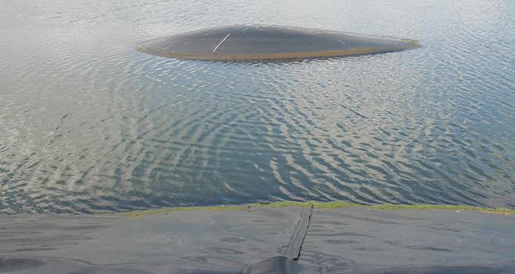Start the week with the latest in the geoengineering world. Here’s the GeoWire conversation for the week of August 31. WORK SMARTER.
ENVIRONMENTAL IMPACT
Whoa: Researchers in Sweden have discovered a solar-energy-storing molecule. [Phys.Org]
How to avoid 9 expensive hazardous waste violations [Environmental Protection]
Video: Sludge Remediation Strategies with Geotextiles [Geosynthetica]
GEOSYNTHETICS
Avoiding Whales in Anaerobic Digesters [Geosynthetica]

10 questions with Prof. Neil Dixon, whose research into sustainability and climate change has had a beneficial impact on the field of geosynthetics [International Geosynthetics Society]
GeoAmericas 2020 Online Agenda Lives Up to the Hype [Geosynthetica]
Online learning opportunities in geosynthetics, September 1 – 3: energy infrastructure, concrete mats, and composite lining systems on slopes [Geosynthetica]
FINANCE
The European Commission has announced financing for one of Austria’s largest planned wind farms, a 143 MW installation. [EU]
Though future air travel revenue is cloudy and 2020 financing was cut by $50 billion, the long-awaited Berlin-Brandenburg International Airport will finally open October 31 in Berlin [Flight Global]
Is government-backed project finance risky in Brazil? [BN Americas]
GOVERNMENT
Some infrastructure-spending uncertainty awaits Japan, following the abrupt August 28 resignation of Prime Minister Shinzo Abe. He is longest-serving prime minister in the nation’s history. [Japan Times]
Canada is getting back to infrastructure spending, essentially shaking off Covid’s impact on the market [On-Site Magazine]
INTERESTING READS
The “Conway knot” remained unsolved in mathematics for 50 years. Then, a graduate student took up the challenge. She put the question to rest in only a few days. [Boston Globe]
Historical racial inequality in US housing practices have produced inequality in urban heat islands. This may suggest a more localized rethink of how engineers, urban planners, and cities respond to climate change. [Climate Fwd – NY Times]
-
- That same Climate Fwd column also addresses customized weather forecasts, which are increasingly being used by major construction and engineering firms for more accurate site scheduling. Entrepreneurial meteorologists!
Look: Nature is just going to find a way. Like the tomato plant that emerged from the soil and leaf waste bin on my patio and began to flower last week. Like the minnow-sized stickleback that has transformed the Baltic coast. [Science]
TECHNOLOGY
10 Easy Steps for Technology Implementation [Forbes]
Nano Tools for Managing Remote Workers [Knowledge@Wharton]
The coming tech schism of post-pandemic life: How might the workplace operate? [Information Week]
WORK LIFE
Is discomfort essential to progress? It may be, especially for leadership roles [Fast Company]
In a post-NDA world, does transparency help founders identify conflicts of interest? [TechCrunch]
How to be “forever” employable [Havard Business Review]
This is the August 31, 2020 GeoWire from Geosynthetica. GeoWire is published on Mondays with thought-leading links to help infrastructure professionals work smarter. News and ideas to share? Contact us.
Recent GeoWire Editions
August 24, 2020
August 17, 2020
August 10, 2020
August 3, 2020












